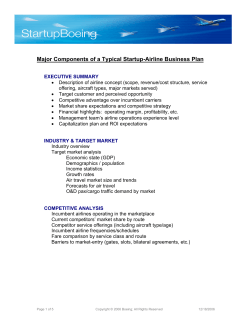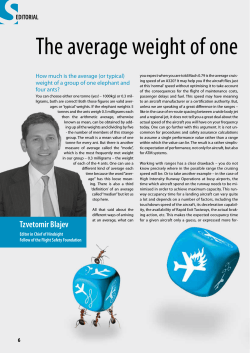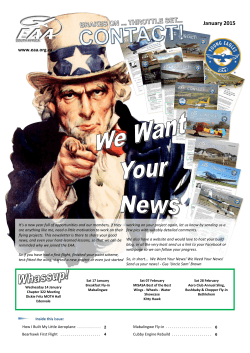
AK LO2 - Rules of the Air.pps
Uncontrolled copy not subject to amendment Airmanship Knowledge Learning Outcome 2 Rules of the Air Revision 1.00 Airmanship Knowledge Learning Outcome 2 Know the basic principles of the Rules of the Air Rules of the Air Rights of Way Without the Highway Code the many thousands of cars would find it impossible to move about safely. There must be rules to govern the way aircraft move about the sky so that accidents can be avoided. They are called “Right of Way” rules. Different for each type of aircraft Balloons All types of aircraft must give way to balloons Gliders Gliders have the right of way over both powered aircraft and airships Airships Airships must give way to both gliders and balloons Powered Aircraft Powered conventional aircraft must give way to balloons, gliders and airships Approaching aircraft When approaching head on, each aircraft must alter course to the right Converging Aircraft When on converging courses at the same height, the aircraft which has the other on its Starboard (Right) must give way Overtaking When overtaking the aircraft being overtaken has the ‘right of way’. The overtaking one must avoid the other by turning Right. NOTE: If both are gliders the over-taker may turn right or left. Landing An aircraft landing or on final approach to land has right of way over aircraft in flight or on the ground. When two or more aircraft are approaching to land, the lower one has right of way Note: unless the captain of the lower aircraft becomes aware that one of the others has an emergency. Aircraft on the ground Aircraft and vehicles being taxied give way to aircraft being towed. Vehicles not towing aircraft give way to aircraft being taxied. Rules at Night At night it can be difficult for a pilot to see another aircraft - and when it is seen, its heading may still be unknown. Rules at night Most modern aircraft carry one or more flashing “anticollision” lights so that they can be seen easily, and “navigation” lights. Powered Aircraft Navigation Lights Powered aircraft – Port side (left) Red, Starboard side (right) Green, Rear White 110 degrees 140 degrees Glider Navigation Lights Gliders – may carry the same type of lights as powered aircraft or this type Airship Navigation Lights Airships Moving Airship Stationary Airship Balloon Navigation Lights Balloons – Carry a red light hung 9 metres below the basket Converging at Night Converging: if the Harrier (A) pilot looks out to starboard and sees a RED light moving alongside (B) Converging at Night He knows that the other aircraft has right of way and he must take action to avoid a collision Converging at Night The Jaguar pilot (A) sees a GREEN light crossing from port to starboard, and therefore knows that the Hawk (B) should give way Converging at Night The Jaguar pilot must, however, be aware that the Hawk pilot might not have seen him and should therefore be ready to take avoiding action if necessary Staying alert Use your eyes!! It is the responsibility of all in the aircraft to check for hazards – including other aircraft Staying alert Alert captain to position using Clock Code system: Staying alert Indicate HIGH / LEVEL / LOW, relative to your aircraft Airspace • Used to safely control and manage Air Traffic Airspace is divided into classes, or functional areas. • Some have strict rules on the conduct of flying within them: they are termed “Controlled Airspace”. Airways System One important class is a network of imaginary “tunnels” in the air called AIRWAYS. These facilitate safe passage of large numbers of aircraft in congested airspace. Airways System Airways Any aircraft can use them providing: • The pilot has a valid instrument rating • The aircraft is fitted with appropriate radio and navigational equipment • The flight is made in accordance with the rules Features Of Airways • They are between 10 and 20 nautical miles (18.5 to 37km) wide • Have Upper and Lower height limits • As they approach airfields they do slope down to the ground to form airfield zones Features Of Airways • The centre of an airway is marked by beacons • Aircraft fly from beacon to beacon reporting to ATCC their position, time and height Clearance For Airways • Clearance is always required for flights along airways • Routes taken must be planned and submitted to ATCC before takeoff • Contact with ATCC must be established before an aircraft can enter the airway Clearance For Airways • Aircraft is tracked on radar, all through it • It remains the pilot’s responsibility, to maintain planned tracks and timings Crossing Airways If an aircraft wishes to cross an airway there are 2 ways to do it: • If the base of the airway is above the ground, the aircraft can fly underneath with no permission needed. Crossing Airways If an aircraft wishes to cross an airway there are 2 ways to do it: • Flown through the airway, provided clearance and radar control is obtained. Questions?
© Copyright 2025










